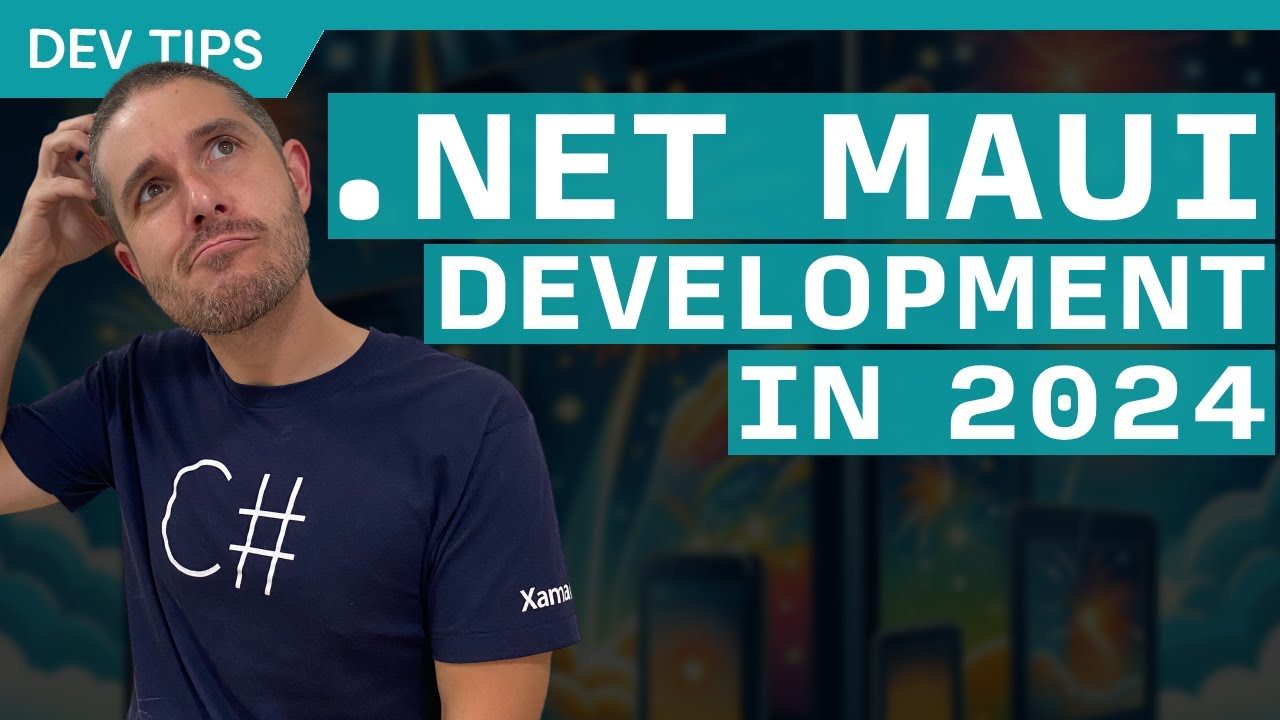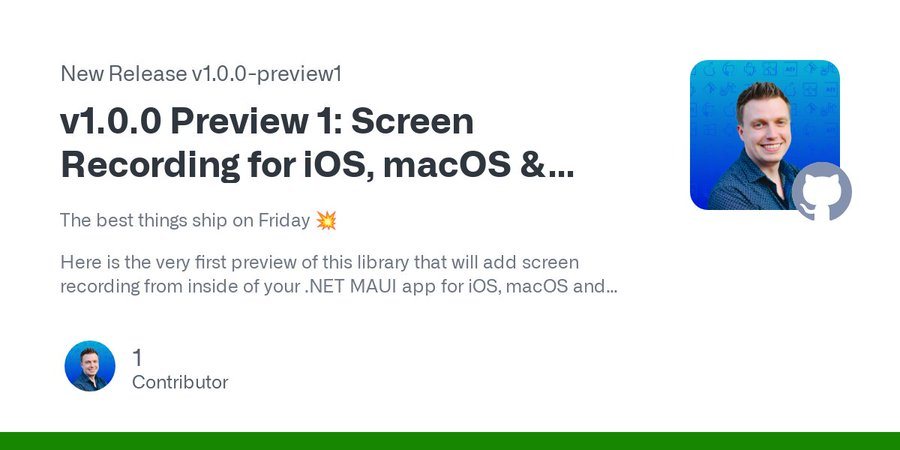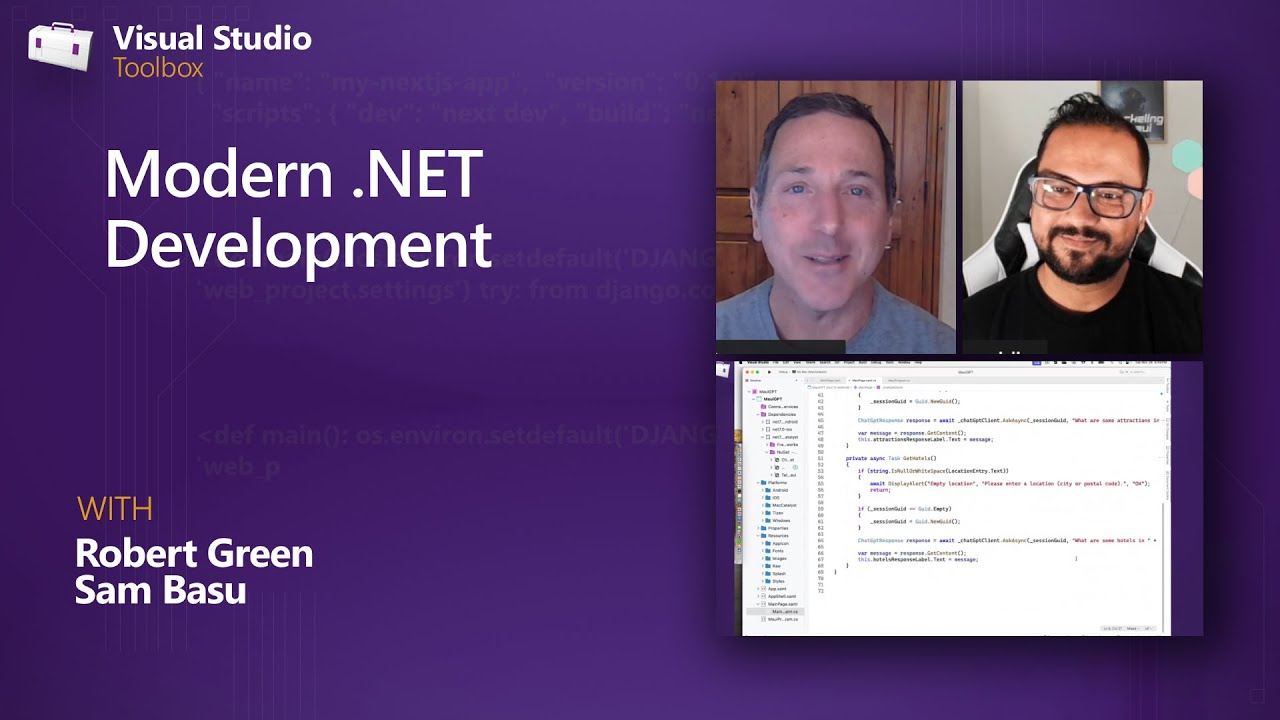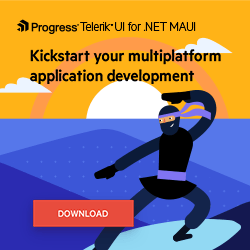Sands of MAUI: Issue #130

Welcome to the Sands of MAUI—newsletter-style issues dedicated to bringing together latest .NET MAUI content relevant to developers!
A particle of sand—tiny and innocuous. But put a lot of sand particles together and we have something big—a force to reckon with. It is the smallest grains of sand that often add up to form massive beaches, dunes and deserts.
.NET developers are excited with the reality of .NET Multi-platform App UI (.NET MAUI)—the evolution of modern .NET cross-platform developer technology stack. With stable tooling and a rich ecosystem, .NET MAUI empowers developers to build native cross-platform apps for mobile/desktop from single shared codebase, while inviting web technologies in the mix.
While it may take a long flight to reach the sands of MAUI island, developer excitement around .NET MAUI is quite palpable with all the created content. Like the grains of sand, every piece of news/article/documentation/video/tutorial/livestream contributes toward developer experiences in .NET MAUI and we grow a community/ecosystem willing to learn and help.
Sands of MAUI is a humble attempt to collect all the .NET MAUI awesomeness in one place. Here's what is noteworthy for the week of January 22, 2024:
Starting with .NET MAUI
.NET MAUI is the evolution of modern .NET cross-platform development stack, allowing developers to reach mobile and desktop form factors from a single shared codebase. A few years of solid engineering and community involvement brings .NET MAUI to today—packing a solid framework foundation with mature tooling and a rich development ecosystem.
For developers coming in new to .NET MAUI, all the terminology, concepts, code sharing with web apps and support libraries, may feel a little overwhelming. Thankfully James Montemagno is here for the rescue with a video that covers almost everything around .NET MAUI—starting .NET MAUI development in 2024.
James starts out from the basics—what is .NET MAUI, supported platforms, installations and how to get started. With the .NET 8 milestone, .NET MAUI sports heavily tuned performance across platforms, robust desktop support and overall framework stability. There is plenty of developer inspiration from showcase .NET MAUI apps and a rich ecosystem of UI components to light up wonderful app UX—developers should not have to reinvent the wheel.
With a ton of learning resources, updated migration support with Upgrade Assistant and solid hybrid app development story with Blazor, modern .NET MAUI has arrived—with lots of promise and welcoming all developers.

UI Gradients
.NET MAUI is built to enable .NET developers to create cross-platform apps for Android, iOS, macOS and Windows, with deep native integrations, platform-native UI, and hybrid experiences that extend the reach of Blazor/JS web UI technologies. With increased stability and a rich ecosystem, there are lot more developers building cross-platform apps with .NET MAUI.
Developer attention is precious, though, and knowledge is often best gained in bite-sized pieces. Maddy Montaquila has started a new series of short videos for developers called .NET MAUI Minutes and the third one is up—using UI gradients in .NET MAUI.
Modern mobile/desktop apps should sport delightful UX and that often starts with wonderful UI that entices more app usage. Colors are convenient way to make apps attractive and .NET MAUI provides flexibility with color gradients built right in. Starting off with a basic white frame, Maddy showcases how to use color gradients—gradient brushes in .NET MAUI expose flexible APIs for developers.
With easy XAML markup and color gradients built into .NET MAUI, there isn't much excuse to not make gorgeous app UI—colors make the world beautiful and can work wonders on apps.

January XAML Fest
While .NET MAUI provides flexibility for .NET developers wanting to build cross-platform native mobile/desktop apps, the large majority of .NET MAUI developers will likely end up using C#/XAML to define app UI. There is good news for developers wanting to polish up their UI building skills—say hello to January XAML Fest by Leomaris Reyes, a month-long celebration dedicated to all things XAML in .NET MAUI.
The goal of the special series is to delve deep into the world of UI design by replicating key portions of UI from renowned apps, and the first article is up—recreate Uber Card UI in .NET MAUI.
With January XAML Fest, Leomaris plans to roll out a collection of articles—each tackling a different piece of UI, breaking down the XAML code, and providing developers with a clear, concise guide to crafting such UI themselves. The Uber Card UI is a sleek and functional interface element that is a staple in modern app design—Leomaris starts by breaking down the original UI into blocks that can be recreated. With concise XAML and explanations every step of the way, Leomaris slowly builds up the Uber UI one block at a time—there is plenty of UI inspiration for .NET MAUI developers.
January XAML Fest is a festival of code and design, where developers are invited to celebrate, learn and enhance UI skills.

Screen Recording in .NET MAUI
Recording the screen from within an app—this seems to be fairly common feature demand, particularly for modern mobile apps. Thanks to Gerald Versluis, screen recording from within the app is about to become trivial easy for .NET MAUI developers—say hello to the Preview of Plugin.Maui.ScreenRecording, now available as a NuGet package.
With a quick extension method, Plugin.Maui.ScreenRecording can be configured to work for .NET MAUI apps—platform reach includes iOS, macOS and Android. For .NET MAUI apps wanting to use Plugin.Maui.ScreenRecording, permissions to save screen recording clips to the media library has to be set up for iOS/macOS/Android. Usage is rather easy with well-defined APIs to check device capability and start/stop recording.
While early days, community support, interest and potential is big for Plugin.Maui.ScreenRecording—cheers to what's ahead.

.NET Productivity
Modern .NET developers have it quite good—mature development frameworks, stable tooling and healthy rich ecosystems. While things can always improve, it doesn’t hurt to explore what’s wonderful. Robert Green recently hosted an aging developer on the VS ToolBox Show—the topic was modern .NET developer productivity.
The discussion began with exploration of the state of the .NET ecosystems—matured frameworks take .NET code to just about any platform/device. Rich tooling compliments developer productivity with .NET—Visual Studio and Visual Studio Code cater to the varying needs of developers.
While Blazor for web apps and .NET MAUI for cross-platform app development often steal the .NET spotlight, the duo took time to talk about real-world .NET solutions—console apps, desktops apps and containerization with Docker with latest chiseled Ubuntu containers. And no modern .NET discussion would be complete without mention of Artificial Intelligence—it is rather easy for .NET developers to integrate with ChatGPT or bring in other AI smarts inside apps for next-generation of user experiences.

That's it for now.
We'll see you next week with more awesome content relevant to .NET MAUI.
Cheers, developers!

Sam Basu
Sam Basu is a technologist, author, speaker, Microsoft MVP and gadget lover. With a long developer background, he also worked as a Developer Advocacy Manager for advocating modern web/mobile/cloud development platforms on Microsoft/Telerik/Kendo UI technology stacks. His spare times call for travel, fast cars, cricket and culinary adventures with the family.

